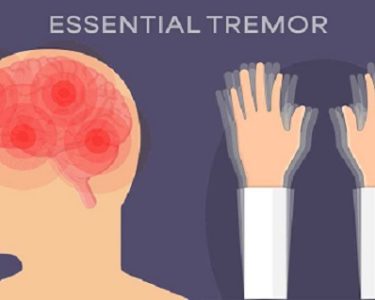Essential tremor (ET) is a neurological condition characterized by uncontrollable shaking, often in the hands, arms, head, or voice. While it is not life-threatening, the condition can significantly impact daily activities and quality of life. Treatment options for essential tremor vary and include medications, therapy, surgical interventions, and lifestyle adjustments. But one of the most common questions for those diagnosed with ET is: Does insurance cover essential tremor treatment?
What is Essential Tremor?
Essential tremor (ET) is a neurological condition characterized by uncontrollable shaking or trembling, often affecting the hands, but it can also impact the head, voice, legs, or other parts of the body. It is one of the most common movement disorders and differs from other types of tremor, such as those associated with Parkinson’s disease.
Related Articles: Essential Tremors Military Connected Disability: The Condition and Claiming Benefits
Key Features:
- Tremor Location: Most commonly affects the hands and arms, but may also involve the head (causing a nodding or shaking motion), voice, or other body parts.
- Trigger Factors:
- Typically noticeable during voluntary movements, such as writing, drinking, or eating (action tremor).
- Often absent when the body is at rest.
- Progression: Symptoms usually worsen over time, but the rate of progression varies.
- Heredity: Often runs in families, suggesting a genetic component.
Causes:
The exact cause of essential tremor is unknown, but it is thought to involve abnormal communication between certain areas of the brain, particularly the cerebellum and thalamus.
Related Articles: Best IT Careers for Taureans with Essential Tremors
Risk Factors:
- Age: More common in older adults, though it can appear at any age.
- Family History: A strong familial link; about 50% of cases are inherited in an autosomal dominant manner.
Diagnosis:
There is no definitive test for ET. Diagnosis is based on:
- Medical history and symptom evaluation.
- Ruling out other conditions such as Parkinson’s disease or thyroid issues.
- Neurological examinations to assess the nature and severity of tremor.
Management and Treatment:
While there is no cure, treatment focuses on managing symptoms:
- Lifestyle Changes:
- Reducing caffeine and other stimulants.
- Managing stress, as anxiety can exacerbate tremors.
- Medications:
- Beta-blockers (e.g., propranolol).
- Anti-seizure drugs (e.g., primidone).
- Sedatives or other medications in severe cases.
- Physical Therapy: Helps improve coordination and control.
- Surgical Options: Reserved for severe cases.
- Deep Brain Stimulation (DBS): Involves implanting a device to regulate abnormal brain signals.
- Focused ultrasound: A non-invasive treatment to target specific brain areas.
Related Articles: Study Links Gene Variations to Brain Changes in Essential Tremor
Understanding Insurance Coverage for Essential Tremor
Insurance coverage for essential tremor treatment largely depends on the type of treatment, the severity of the condition, and the specifics of an individual’s health insurance policy. Below, we explore common treatments and their potential for coverage:
1. Medications
Medications are often the first line of treatment for managing essential tremor. Commonly prescribed drugs include beta-blockers (e.g., propranolol) and anticonvulsants (e.g., primidone).
Related Articles: Acupuncture: An Ancient Practice for Essential Tremor Relief
- Insurance Perspective:
Most health insurance plans cover prescription medications for essential tremor, as long as the drugs are FDA-approved and prescribed for a medically necessary purpose. However, copays, deductibles, or formulary restrictions may apply. Some insurers may require patients to try more affordable medications before approving coverage for newer or more expensive options.
2. Therapies and Non-Medical Treatments
Physical therapy and occupational therapy are often recommended to help individuals adapt to the challenges posed by essential tremor.
- Insurance Perspective:
Coverage for therapy varies widely. Many insurance plans, including Medicare and Medicaid, offer partial or full coverage for physical and occupational therapy if prescribed by a doctor. However, there may be limits on the number of sessions covered annually.
3. Surgical Interventions
For severe cases of essential tremor that do not respond to medication, surgical options such as deep brain stimulation (DBS) or focused ultrasound therapy may be recommended.
Related Articles: Herbal Remedies for Benign Essential Tremor: Your Guide to Finding Relief
- Deep Brain Stimulation (DBS): Involves implanting electrodes in the brain to regulate abnormal activity.
- Focused Ultrasound Therapy: A non-invasive procedure that uses ultrasound waves to target brain areas causing tremors.
- Insurance Perspective:
Both DBS and focused ultrasound are generally considered medically necessary treatments for severe essential tremor. Most insurance providers cover these procedures, though coverage often requires extensive documentation from neurologists and other specialists. Pre-authorization and approval processes can be lengthy, and out-of-pocket costs may still be substantial. Medicare and Medicaid also provide coverage for DBS in specific cases.
4. Lifestyle Modifications and Alternative Therapies
Patients with mild symptoms might benefit from lifestyle adjustments or complementary treatments, such as stress management techniques, dietary changes, or acupuncture.
Related Articles: 11 Natural Treatments for Benign Essential Tremor
- Insurance Perspective:
Lifestyle changes and alternative therapies are usually not covered by traditional insurance plans unless they are explicitly recommended and documented by a healthcare provider. Even then, coverage is limited.
Steps to Ensure Coverage for Essential Tremor Treatments
- Consult Your Insurance Provider:
- Contact your insurance company to confirm coverage details for essential tremor treatments, including medications, therapies, and surgeries.
- Work with Your Healthcare Provider:
- Ensure your doctor provides detailed medical documentation and a treatment plan that clearly demonstrates the necessity of the recommended treatment.
- Explore Financial Assistance Programs:
- Organizations such as the International Essential Tremor Foundation (IETF) may offer resources and guidance for financial assistance.
- Appeal Denials:
- If your insurance denies coverage, consider appealing the decision with supporting medical evidence.
Conclusion
While essential tremor treatment is typically covered by insurance to some extent, the specific coverage depends on the treatment type, insurance policy, and medical necessity. Patients should work closely with healthcare providers and insurance representatives to understand their benefits and navigate potential barriers. Taking proactive steps can help ensure access to the most effective treatments, enabling individuals with essential tremor to lead more manageable lives.




